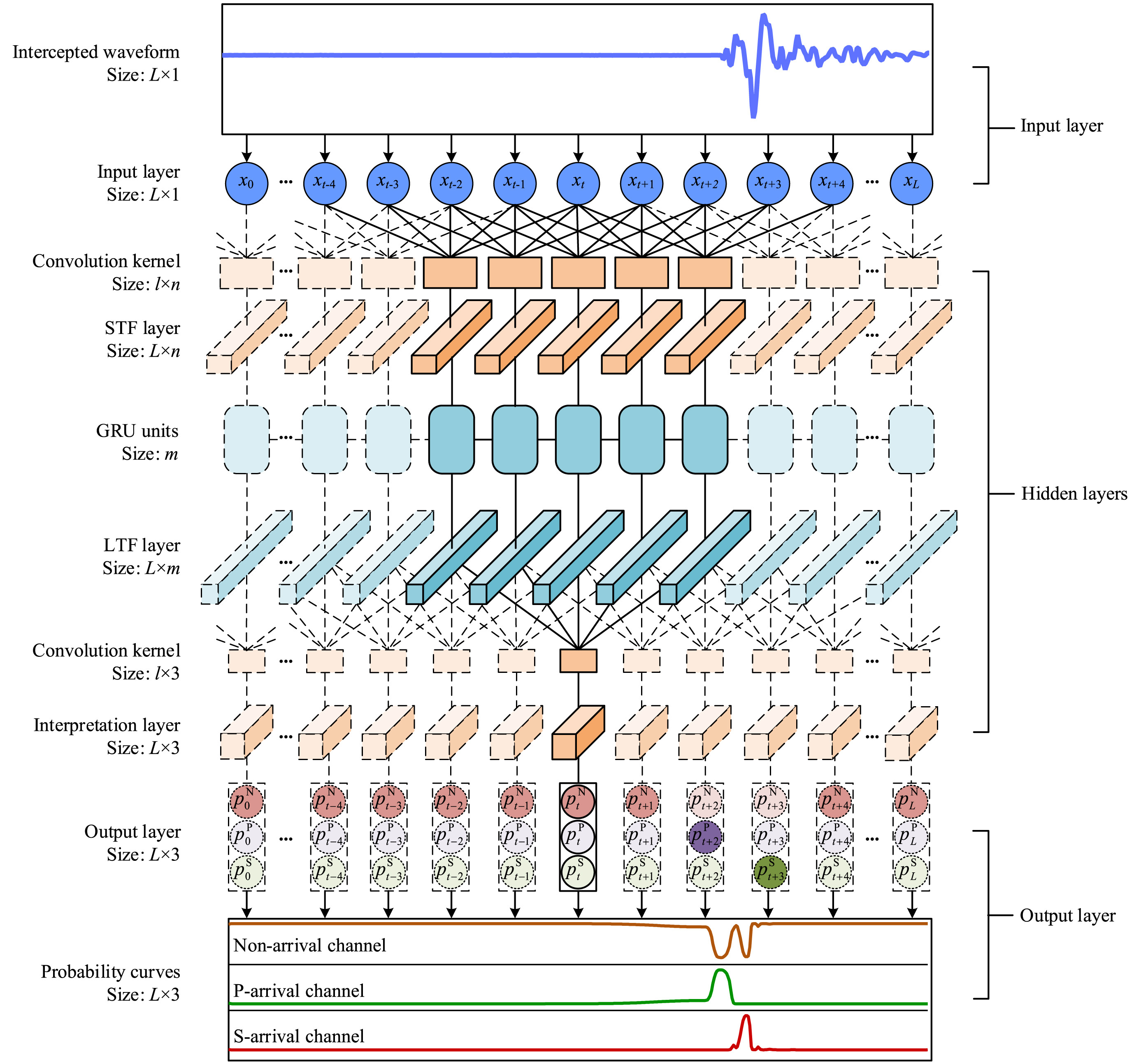JRMGE / Vol 16 / Issue 3
Real-time arrival picking of rock microfracture signals based on convolutional-recurrent neural network and its engineering application
Bing-Rui Chen, Xu Wang, Xinhao Zhu, Qing Wang, Houlin Xie
Show More
a State Key Laboratory of Geomechanics and Geotechnical Engineering, Institute of Rock and Soil Mechanics, Chinese Academy of Sciences, Wuhan, 430071, China
b University of Chinese Academy of Sciences, Beijing, 100049, China
2024, 16(3): 761-777. doi:10.1016/j.jrmge.2023.07.003
Received: 2023-01-30 / Revised: 2023-06-04 / Accepted: 2023-07-09 / Available online: 2023-08-05
2024, 16(3): 761-777.
doi:10.1016/j.jrmge.2023.07.003
Received: 2023-01-30
Revised: 2023-06-04
Accepted: 2023-07-09
Available online: 2023-08-05
Accurately picking P- and S-wave arrivals of microseismic (MS) signals in real-time directly influences the early warning of rock mass failure. A common contradiction between accuracy and computation exists in the current arrival picking methods. Thus, a real-time arrival picking method of MS signals is constructed based on a convolutional-recurrent neural network (CRNN). This method fully utilizes the advantages of convolutional layers and gated recurrent units (GRU) in extracting short- and long-term features, in order to create a precise and lightweight arrival picking structure. Then, the synthetic signals with field noises are used to evaluate the hyperparameters of the CRNN model and obtain an optimal CRNN model. The actual operation on various devices indicates that compared with the U-Net method, the CRNN method achieves faster arrival picking with less performance consumption. An application of large underground caverns in the Yebatan hydropower station (YBT) project shows that compared with the short-term average/long-term average (STA/LTA), Akaike information criterion (AIC) and U-Net methods, the CRNN method has the highest accuracy within four sampling points, which is 87.44% for P-wave and 91.29% for S-wave, respectively. The sum of mean absolute errors (MAESUM) of the CRNN method is 4.22 sampling points, which is lower than that of the other methods. Among the four methods, the MS sources location calculated based on the CRNN method shows the best consistency with the actual failure, which occurs at the junction of the shaft and the second gallery. Thus, the proposed method can pick up P- and S-arrival accurately and rapidly, providing a reference for rock failure analysis and evaluation in engineering applications.
Keywords: Rock mass failure, Microseismic event, P-wave arrival, S-wave arrival, Deep learning
Article Data
Author(s) Information
Bing-Rui Chen

Dr. Bing-Rui Chen is a Professor of Institute of Rock and Soil Mechanics, Chinese Academy of Sciences, and University of Chinese Academy of Sciences. He obtained his BSc degree and PhD from Northeastern University, China. He is a Vice Chairman of Crustal Stress and Earthquake Committee of Chinese Society for Rock Mechanics and Engineering (CSRME). He is also an Editorial Board Member of Gold Science and Technology, and Young Editorial Board Member of Tunnelling Construction. He won one Second Prize of National Science and Technology Progress Award (Ranking 3), one First Prize of Technological Invention, one Patent Gold Award and one Patent Silver Award in Hubei Province and one Patent Excellence Award in China (Ranking 1). His research interests are microseismic monitoring technology, analysis and early warning methods, and mitigation of rock engineering disasters.

